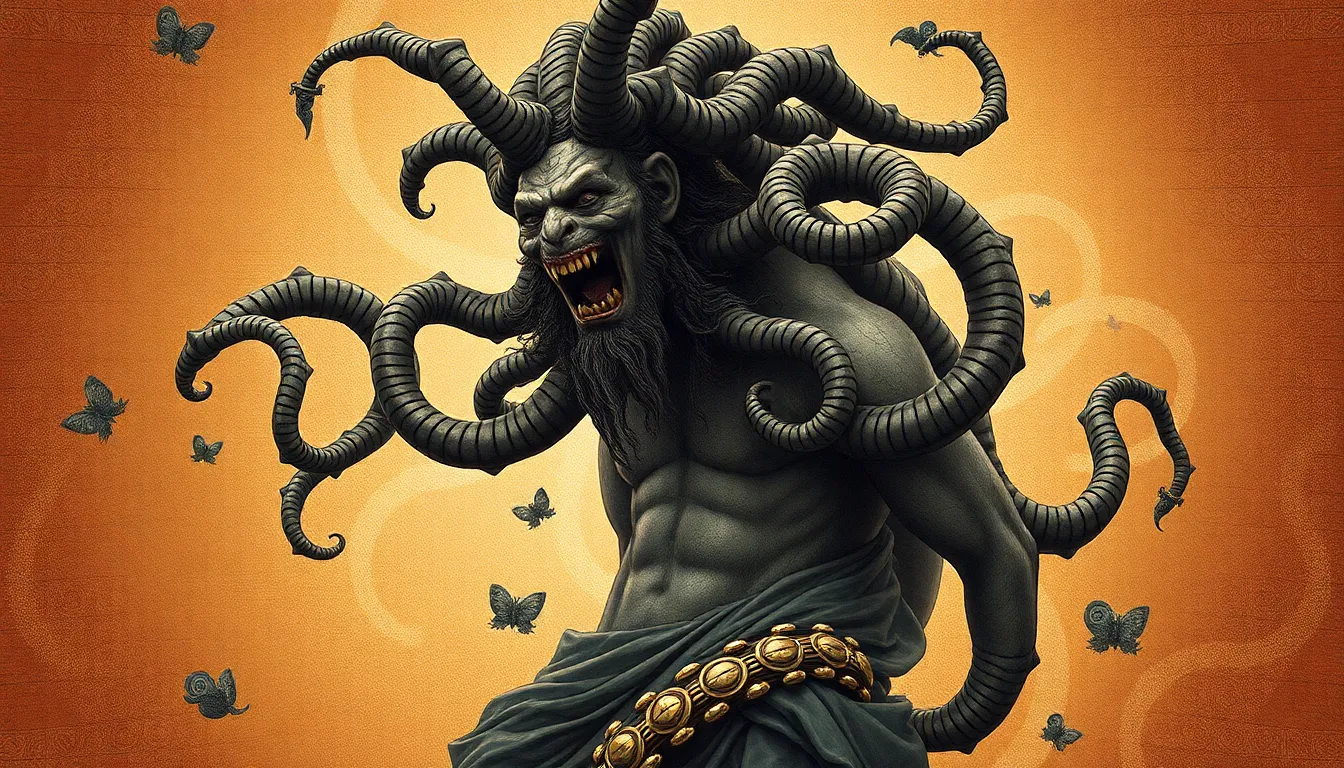The Gorgon in Modern Art: Interpretations and Inspirations
I. Introduction
The Gorgon myth, deeply rooted in ancient Greek culture, has captivated the imagination of artists for centuries. Gorgons, particularly Medusa, are often depicted as monstrous figures with snakes for hair, capable of turning onlookers to stone. Over time, these mythical beings have transcended their origins, evolving into powerful symbols within the realm of art.
The significance of the Gorgon in art history is profound, as artists have utilized her image to explore themes of fear, beauty, and transformation. This article aims to delve into modern interpretations and inspirations derived from the Gorgon myth, tracing her journey through various artistic movements and highlighting her relevance in contemporary culture.
II. Historical Context of the Gorgon Myth
The origins of the Gorgon myth can be traced back to ancient Greece, where they were initially depicted as protective deities. The most famous of the Gorgons, Medusa, was one of three sisters, known for her beauty before being cursed by Athena. This transformation from beauty to monstrosity is a critical aspect of her story, symbolizing the duality of human nature.
Key characteristics of Gorgons include:
- Snake hair
- Ability to petrify anyone who gazes upon them
- Representation of female rage and power
Throughout different art movements, the representation of Gorgons has evolved, reflecting changing societal values and artistic styles. From the archaic pottery of the Greeks to the dramatic sculptures of the Renaissance, the Gorgon has been reinterpreted in various forms.
III. The Gorgon in 19th Century Art
The 19th century saw a resurgence of interest in mythological themes, particularly during the Romantic period. Artists embraced the Gorgon motif as a way to explore the deeper emotional landscape of human experience.
Notable artists of the time who featured the Gorgon include:
- Jean-Auguste-Dominique Ingres with his painting “The Vow of Louis XIII,” subtly referencing Medusa’s protective qualities.
- Edward Burne-Jones, who incorporated Gorgons into his Pre-Raphaelite works, emphasizing their beauty and tragic stories.
Cultural and societal influences, such as the rise of feminism and the questioning of traditional gender roles, played a crucial role in these interpretations. The Gorgon began to be viewed not merely as a monster, but as a complex figure representing female strength and vulnerability.
IV. The Gorgon in 20th Century Modernism
In the 20th century, Surrealism emerged as a dominant art movement, with artists using the Gorgon as a symbol of fear and desire. The Gorgon’s monstrous qualities became a metaphor for the unconscious mind and the darker aspects of human nature.
Major works that redefined Gorgon imagery include:
- Salvador Dalí’s dreamlike paintings, which often featured fragmented, abstract forms reminiscent of Gorgon features.
- Pablo Picasso’s reinterpretations, where he fused Gorgon elements with his distinctive Cubist style.
Abstract interpretations of the Gorgon emerged, allowing artists to deconstruct her image and explore the themes of identity and transformation. The Gorgon became a vessel for expressing the anxieties and complexities of modern life.
V. Contemporary Interpretations of the Gorgon
In contemporary art, the Gorgon has been embraced as a powerful figure, often reflecting themes of empowerment and resilience. Postmodern artists have reexamined the Gorgon myth, challenging traditional narratives and offering new perspectives.
Feminist perspectives on the Gorgon myth have gained traction, with artists using her image to critique societal standards of beauty and femininity. The Gorgon is often seen as a symbol of female rage and strength, reclaiming her narrative from one of victimhood to empowerment.
Performance art has also played a role in exploring the Gorgon myth. Artists use various mediums to represent the Gorgon, creating immersive experiences that challenge audiences to confront their fears and perceptions.
VI. The Gorgon as a Symbol of Empowerment
The modern narrative surrounding the Gorgon has shifted towards empowerment, with artists reclaiming her image in various ways. Graphic novels and popular culture often depict the Gorgon as a heroine, challenging the stigma associated with her myth.
Case studies of empowering Gorgon representations include:
- The portrayal of Medusa in the comic series “Lore Olympus,” where she is depicted as a character with depth and agency.
- Films like “Clash of the Titans,” which reimagine the Gorgon as a formidable foe rather than a mere monster.
This reclamation of the Gorgon figure is part of a broader movement to redefine female archetypes in art and media.
VII. The Impact of Technology on Gorgon Representations
The advent of digital art has allowed for a reimagining of Gorgon imagery, giving artists new tools to explore her myth. Digital platforms enable the creation of vibrant, interactive representations that engage audiences in novel ways.
Virtual reality experiences have also emerged, allowing participants to immerse themselves in Gorgon-themed environments, where they can confront the myth and its implications on a personal level.
Social media plays a significant role in disseminating Gorgon-inspired art, providing a platform for diverse voices to reinterpret her narrative and reach global audiences.
VIII. Conclusion
In summary, the exploration of the Gorgon in modern art reveals her ongoing relevance and adaptability as a symbol. From ancient myths to contemporary interpretations, the Gorgon has evolved, reflecting societal changes and artistic innovations.
The Gorgon continues to inspire artists to confront complex themes of identity, power, and transformation. Future directions for research and artistic exploration of the Gorgon myth promise to uncover even more layers of meaning in this multifaceted figure.




